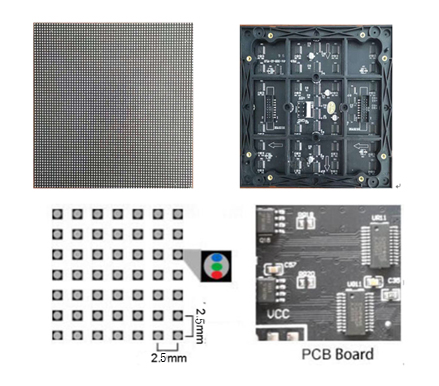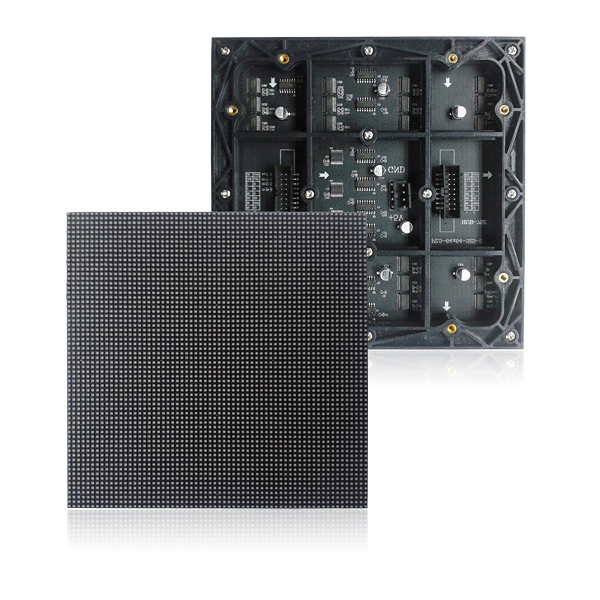With the emergence of the concept of Industry 4.0, the traditional thinking of manufacturing is experiencing an unprecedented impact. The high integration and upgrading of industrialization and informatization will be the main theme of the transformation of future production models. As a LED industry with a huge lighting market, in the new historical situation, only the path of intelligent LED can go further and further. For the moment, the direction of LED intelligence is mainly divided into two aspects: agricultural intelligence and intelligent optical communication.
When the Internet concept was still in the mainstream of the world, the German academic and industrial community first proposed the “Industry 4.0 Research Project†at the Hannover Messe in 2013. The core of this concept is the information-physical fusion system (Cyber-Physical Systems). , CPS), integrating various digital information, resources, products and people to establish an efficient, fast and flexible information technology, digital production model of products and services. Once this concept was proposed, it quickly spread from Germany to Europe and began to influence the world.
The meaning of intelligent LED lighting
Traditional LEDs appeared as early as 1962. At first, LED products could only emit low-light red light, but now the light that can be emitted has been transmitted through visible light, infrared light and ultraviolet light. At the same time, the use of the original indicator light and display The board develops into displays, lighting decoration and lighting. In recent years, with the advent of new technologies such as the Internet and cloud computing, people have been dissatisfied with the basic functions and economic benefits of LED lighting with high brightness, low energy consumption, long life and low power, but more The combination of LED and advanced Internet of Things and cloud computing technology, from the perspective of human psychology, physiology and sociology, consider individual comfort, photobiosafety, soft conditions such as improving learning, work and life, and reducing air pollution. The social benefits, that is, the intelligence of LED.
Under the background of Industry 4.0, combined with the problem of serious overcapacity in the low-end of traditional LED homogenization in the past decade, our development and demand for LED products can not only stay in the performance of lighting itself, but It is an effort to combine with other industrial technologies in order to obtain LED smart lights with composite functions, thereby diverting the production capacity of the LED industry. So far, there are two main diversion directions, the first one is to break through in the field of agricultural lighting, and the second is to develop into the field of optical communication.
LED agricultural intelligence
In agriculture, we know that light is one of the most important environmental factors for plant growth and development, and it has a direct regulation effect on photosynthesis and growth and metabolism of plants. Currently known environmental factors, such as relative humidity, temperature, light intensity and light quality, have a close impact on plant growth and development. Among these factors, light quality directly affects the main growth indicators such as plant growth, side branching, leaf expansion and pigment deposition. The integration of these light qualities is mainly through the continuous intensity of red light, blue light, and the path of the hormonal signal has a profound impact on plants to trigger physiological responses to control the growth and development of plants. 
The advantages of using LED as an artificial light source for controlling plant growth are high energy conversion efficiency, use of a DC power source, small product volume, long life, wavelength determination, adjustable light intensity/mass ratio, and low thermal energy output. Some crops have been cultivated under the illumination of LEDs, such as dwellings, peppers, wheat, and spinach. Studies have shown that red light plays an important role in the development of plant photosynthesis, and it can also increase the accumulation of starch on plants. It has also been reported that irradiation of plants with far infrared radiation can improve the antioxidant activity of rice husks. This suggests that specific light radiation can increase the nutrients in the food.
In general, from a long-term perspective, LEDs have a tendency to replace traditional lighting sources. LED-based intelligent lighting system technology can be widely used in biological research of plants or animals; at the same time, this intelligent system can accurately determine the intensity and quality of illumination required for specific plant growth; in addition, intelligent systems can analyze different The growth of plants under light pulse conditions. It is foreseeable that the LED-based agricultural intelligent system will be an important embodiment of the application of “Industry 4.0†in agriculture.
LED optical communication intelligent (lifi)
Lifi is considered a new optical device that emerged in the 21st century. The basic idea of ​​designing such a device is that data can be transmitted through the LED lights. However, the amount of data transmitted through LED light energy is still relatively small. Currently, Lifi is known as an optimized version of Wi-Fi, and its advantage is that it can reduce costs by wireless communication. 
Harald Hass, a professor at the University of Edinburgh in the United Kingdom, known as the “Father of Li-Fiâ€, believes that the core of Lifi technology lies in the strength and potential of LEDs. He also believes that this technology can change our Internet, video, send and receive mail, and so on. Since social development has a wide range of requirements for data transmission, the application of lifi technology can be extended to areas that are not covered by Wifi technology, such as medical technology, engines and other industries. Since lifi is considered to have the fastest Internet access service, this technology is likely to replace the wifi widely used in research institutes and companies, and people can use lifi technology to expand more special areas.
Conclusion
Under the influence of the concept of Industry 4.0, the traditional LED industry must change to the trend of intelligence, and its development direction must be a high degree of integration of industrialization and informationization. The 21st century is called the "century of light", and the photosynthesis of plants is also the foundation of all life. With the high luminous efficiency and low energy consumption of LED artificial lighting system, and taking into account the advantages of information control, LED agriculture will be intelligent. Promote the rapid development of the agricultural and biological industries.
On the other hand, in the optical communication industry, Lifi's concept has begun to attract people's attention, not only because it is more efficient and wider than wireless electromagnetic waves. As more and more people and devices access the wireless network, electromagnetic waves propagating in the air become more and more blocked, making it difficult for people to obtain a continuous high-speed signal. Therefore, the emergence of LED-based lifi technology can overcome many limitations in current wireless networks, thereby providing a safe, efficient, high-speed optical communication environment.
LED module introduction: LED Display Module is one of the main components of the finished Led Display! It mainly consists of LED lamp, PCB board, driver IC, resistor, capacitor and plastic kit!
Classification of Led Display Module
From the light color
LED display module is divided by color:
I. monochromatic modules, such as single red, single green, single blue, single yellow and single white modules
2. Two color modules, such as red and green, red and blue.
3. full color module is mainly a product with red, green and blue primary colors on one LED module

According to the purpose of LED display
LED display module is divided into indoor, semi outdoor and outdoor, grid screen, strip screen, glass screen, etc. according to the different use space.
From the use of lamp beads
According to different LED packaging devices, LED display module can be divided into: LED display module of direct light, LED display module of indoor lattice, LED display module of surface mount.
Divide by pixel spacing
According to the LED pixel spacing, generally used more is: p1.25, p1.875, p1.56, P2, P3, P4, P5 and so on.
LED display function
1. Play the role of commodity publicity and attracting customers.
2. Play the role of store decoration and improve the level of enterprises.
3. Play the role of lighting and innovation.
4. Play the role of popularizing knowledge. (it can be used to play small information of enterprise products and knowledge of relevant industries)
5. Play the role of bulletin board. (promotion, recruitment information release)
6. Act as a foil to the atmosphere. Through the display screen, you can play the welcome words of superior leaders and various VIPs to visit and guide, and the celebration words of various major festivals.
7. It plays a warning role and is often used for road traffic LED navigation indication, etc.
It is undeniable that the ultimate purpose of establishing billboards is to publicize commodity information, attract target customers and make the most profit as much as possible. Led billboard is to achieve this goal to become the first choice of enterprise publicity.

LED Display Module
Led Display Module,Single Led Display Module,Soft Led Display Module,Flexible Led Display Module
Shenzhen Vision Display Technology Co,.LTD , https://www.ledvdi.com
